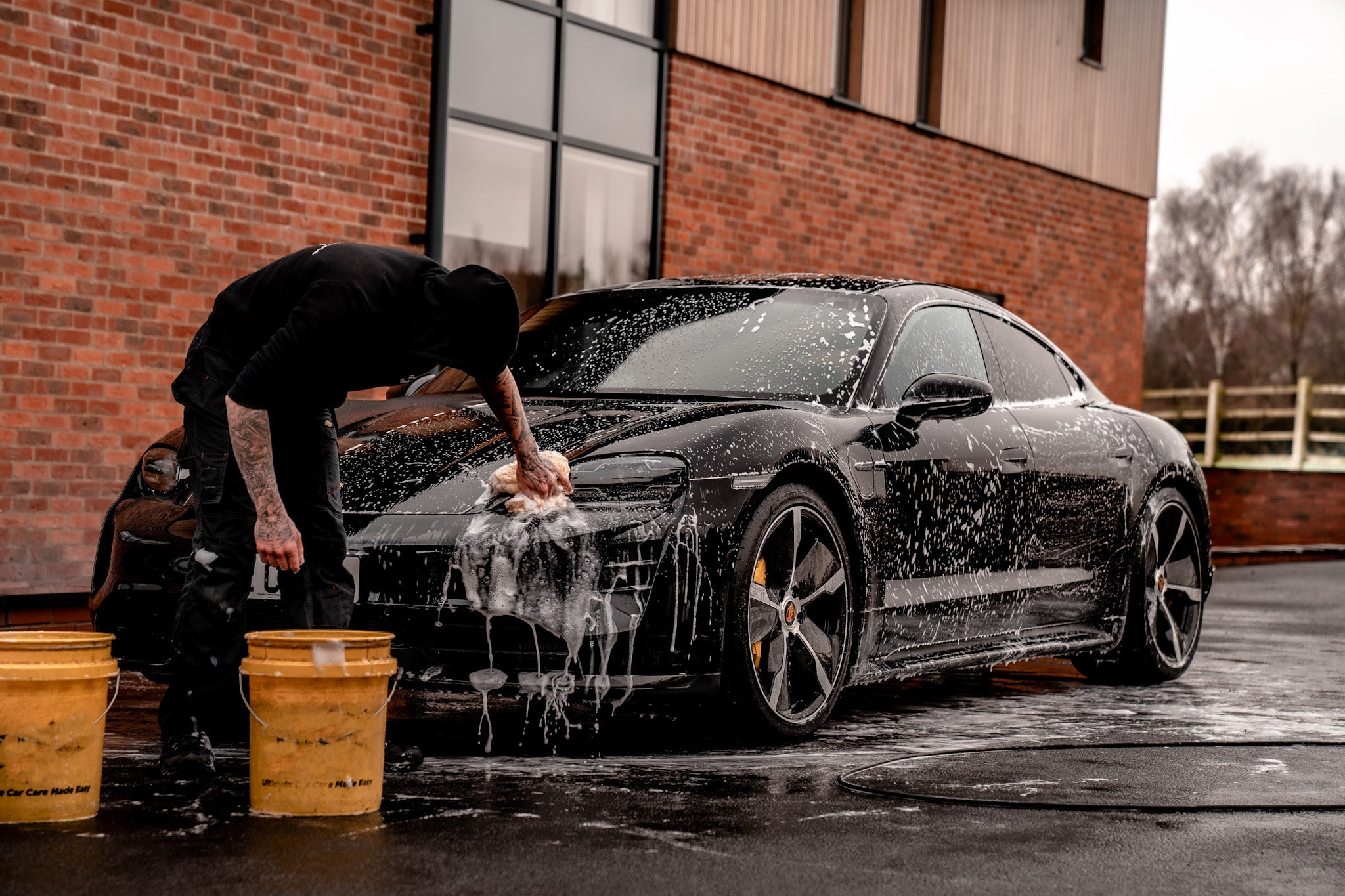Get reliable scratch repair Sarasota to remove car surface damage.
Get reliable scratch repair Sarasota to remove car surface damage.
Blog Article
A Comprehensive Guide to the Kinds Of Ceramic Finish on the Market
Ceramic finishes have arised as a crucial option across numerous sectors because of their distinct residential or commercial properties and applications. From silica-based solutions recognized for their toughness to hybrid alternatives that combine numerous benefits, the choices available can be frustrating. Recognizing the nuances of each type, including their particular advantages and ideal use situations, is necessary for making informed decisions. As we discover the unique attributes and applications of these finishes, the implications for performance and long life become progressively obvious, raising inquiries regarding which kind could best fit your demands.
Recognizing Ceramic Coatings
Ceramic coatings are innovative protective options that have acquired popularity in various industries, particularly in automotive and aerospace applications. These coverings consist of a liquid polymer that, when cured, forms a sturdy, hydrophobic layer externally of the substrate. This layer offers enhanced resistance to ecological impurities, UV radiation, and chemical direct exposure, consequently expanding the life and visual charm of the underlying product.
The essential component of ceramic coatings is silica, which adds to their solidity and resilience. The application process generally includes surface prep work, application of the covering, and curing, which can be accomplished with warm or UV light. As soon as cured, ceramic layers exhibit exceptional bonding residential or commercial properties, enabling them to stick highly to a selection of surfaces, consisting of metals, plastics, and glass.
In enhancement to their safety features, ceramic layers also offer ease of maintenance. Their hydrophobic nature lowers the adherence of dust and grime, making cleaning less complex and less constant. In general, the fostering of ceramic finishings stands for a considerable development in surface area protection innovation, giving both practical and visual benefits across numerous industries.
Sorts Of Ceramic Coatings
Various kinds of ceramic layers are offered, each made to fulfill particular performance requirements and applications - Auto Detailing. The most common kinds include:
Silica-based Coatings: These finishes mainly are composed of silicon dioxide and are understood for their sturdiness and chemical resistance. They are widely made use of in vehicle and industrial applications.
Titanium Dioxide Coatings: Distinguished for their photocatalytic residential properties, titanium dioxide coatings are typically used in settings where self-cleaning and antifungal properties are desirable, such as in building materials and automotive finishes.
Zirconia Coatings: Defined by their high-temperature stability and thermal resistance, zirconia finishings are used in applications such as generator engines and high-performance auto elements.
Alumina Coatings: Displaying exceptional hardness and thermal stability, alumina coverings are frequently used in wear-resistant applications, consisting of cutting devices and commercial equipment. - ceramic coating sarasota
Hybrid Coatings: Combining the properties of various products, hybrid coatings offer enhanced efficiency features, making them suitable for one-of-a-kind and requiring applications.
Each type of ceramic layer offers distinctive functions, allowing individuals to select i was reading this one of the most suitable remedy based upon particular ecological conditions and efficiency demands.
Benefits of Ceramic Coatings
Ceramic coverings, in certain, offer countless benefits that make them increasingly prominent amongst manufacturers and customers alike. These layers are resistant to scrapes, chemicals, and UV rays, making certain that the underlying surface remains secured over time.
Along with longevity, ceramic coverings supply outstanding hydrophobic residential or commercial properties, enabling easy cleaning and maintenance. This water-repellent nature reduces the adherence of dirt, grime, and other contaminants, which can prolong the aesthetic allure and capability of the surface area. Ceramic finishings can considerably enhance thermal resistance, making them excellent for applications that endure high temperatures.

Application Refine
When using ceramic finishings, a precise approach is vital to accomplish optimal outcomes. The application process generally starts with comprehensive surface area preparation. This involves cleaning, decontaminating, and brightening the surface to eliminate all pollutants, including dirt, oil, and prior waxes or sealers. A tidy surface area makes sure correct attachment of the covering.
Once the surface is prepped, the following action is to apply the ceramic finishing. This can be done utilizing an applicator pad or a microfiber cloth, making sure also coverage. It is important to function in tiny sections to preserve control and prevent premature treating. The finish should be applied in slim layers, as thicker applications can bring about unequal surfaces.
After application, the layer calls for a certain treating time, typically ranging from a few hours to a full day, depending upon the item. During this time around, it is vital to avoid exposure to moisture or impurities. A mild buffing might Check Out Your URL be essential after healing to enhance the gloss and eliminate any kind of high places. Following these steps faithfully will optimize the effectiveness and Read More Here durability of the ceramic finishing, providing a sturdy safety layer for the surface area.
Upkeep and Durability
To guarantee the longevity and performance of a ceramic finish, regular maintenance is vital. Ceramic layers, recognized for their resilience and protective top qualities, require details treatment regimens to optimize their life expectancy and efficiency.
In enhancement to routine cleaning, periodic assessments are important. Look for signs of wear or damage, such as hydrophobic homes diminishing or surface flaws. If required, a light gloss may be applied to renew the coating without stripping it away.
Moreover, the application of a booster spray can improve the layer's hydrophobic results and restore its gloss. This is especially valuable for coatings that have actually remained in usage for an extensive duration. Ultimately, by adhering to these maintenance practices, one can considerably prolong the life of a ceramic layer, ensuring that it continues to offer optimal protection against ecological variables and keep the visual allure of the automobile.
Verdict

Report this page